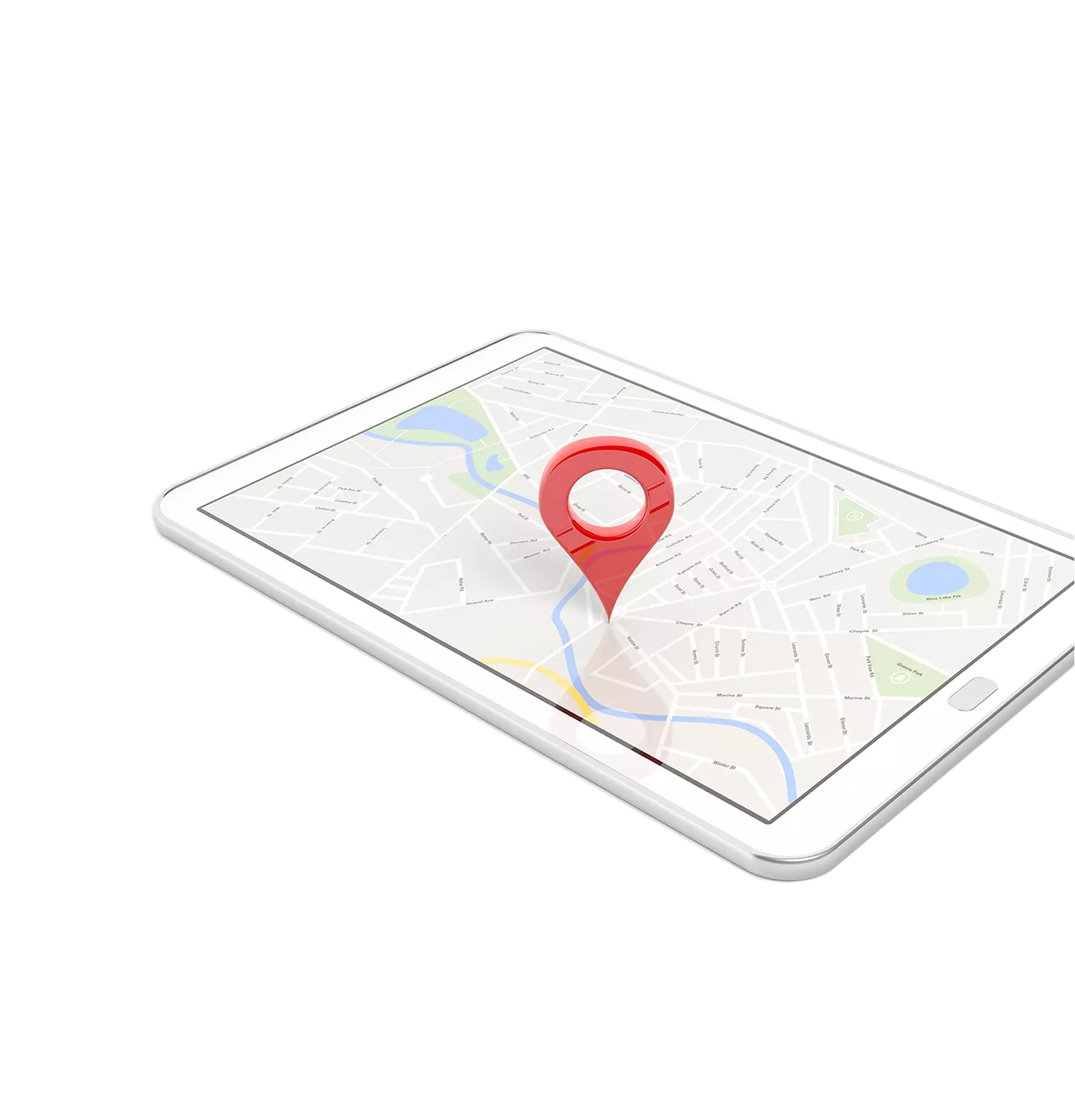Seeing Is Believing: What a TMS Demo Should Tell You About the Software (and the Vendor)
Seeing Is Believing: What a TMS Demo Should Tell You About the Software (and the Vendor)
Seeing Is Believing: What a TMS Demo Should Tell You About the Software (and the Vendor)
May 15, 2025
 Bethany Sanders | Digital Marketing Content Writer
Bethany Sanders | Digital Marketing Content WriterCut to the Chase: Main Insights
Follow these checkpoints to ensure your transportation management system demo tells you everything you need to know:
Focus on real features like load planning, route optimization, auditing and real-time tracking—not just the UI.
Ensure the software aligns with your goals, such as cost reduction or scalability; generic demos are a red flag.
Test usability; daily tasks like reporting or assigning loads should be quick and simple.
Check configurability to fit your workflows, KPIs and compliance without heavy custom coding.
Evaluate vendor expertise and support, looking for industry knowledge and credible case studies.
Confirm seamless integration with ERP, WMS, EDI, telematics and carrier systems via connectors or APIs.

When you're evaluating a transportation management system (TMS), one of the best ways to understand what a solution can really do is to take a product demo—whether that’s a self-guided walkthrough that lets you explore on your own terms or a personalized vendor-led tour.
But let’s be honest: not all demos are created equal. Some will leave you ready to sign on the dotted line. Others? They’ll leave you wondering if you just wasted an hour of your life.
So, how do you make sure you're getting the full picture? Whether you're comparing a shortlist of vendors or just beginning your search, it pays to know what to look for.
Let’s break down some key elements to look for in an online transportation management system demo when you’re exploring potential TMS vendors and products.
1. Comprehensive Features
The first question to ask yourself during any TMS demo is: Does this system actually deliver what was promised?
A quality transportation management system demo should showcase not just the breadth of features the vendor claims to offer, but the depth. Look for fully developed capabilities—not just surface-level checkboxes or clever workarounds disguised as solutions.
For example, you should look for these core functionalities in your transport management software demo:
Load planning tools that automate and optimize shipment grouping.
Route optimization that accounts for distance, delivery windows, fuel efficiency and real-time conditions.
Carrier selection based on cost, performance, contracts and historical data.
Freight audit and payment processes that reduce billing errors and improve reconciliation.
Tracking and visibility dashboards that offer real-time shipment updates across the supply chain.
Analytics and reporting, including dashboards that uncover trends and support strategic planning.
Advanced technologies like artificial intelligence (AI) for decision-making support or 3D load building.
In other words, don't settle for a shiny user interface (UI) tour. Look for real-world applications. If you ship perishable goods, for instance, can you track them in real time? Can you access proof of delivery features like photo capture or time stamps to confirm the condition of goods upon delivery completion? If not, it might be time to raise an eyebrow.
Before your TMS demo, it’s worth making a checklist of the must-have features you’re looking for. It’ll help you stay focused and evaluate vendors consistently.
2. Alignment With Your Business Goals
The truth is—most TMS platforms look good on paper. They boast impressive-sounding features and shiny dashboards. But here’s the real question: Will it help you solve your unique business problems?
During a vendor-led TMS software demo—or even a self-guided tour—you should be able to connect the dots between the software’s capabilities and the outcomes that matter to you. For example:
Are you trying to reduce your transportation spend by 10% this year? Then the demo should show how rate shopping, load consolidation or automated tendering will help you get there.
Struggling with poor visibility across your carrier network? Look for real-time tracking tools, exception alerts and centralized dashboards that offer a clear line of sight from pickup to delivery.
Need to scale without adding headcount? The demo should highlight automation capabilities—like rules-based planning, self-service portals for carriers or predictive analytics for proactive decision-making.
You’re not just buying software—you’re solving your logistics challenges. And you’re likely to be spending a good chunk of money, so to reduce the risk of a costly mistake, be sure to ask yourself:
Can this system help us reach our operational key performance indicators (KPIs)?
Can we see our processes fitting smoothly into this platform without massive disruption?
Or even better—will this system help us build optimized, future-ready workflows that scale with our growth?
Here’s a tip: when the vendor is walking you through a workflow, don’t just nod along. Ask for examples that match your industry, shipment volume or transportation mix. A demo that only talks in abstract terms (“you can configure that”) without showing real alignment to your business? That’s a red flag.
The best demos don’t just show you how the system works—they show you how it helps you win.
3. Intuitive and Simple User Interface
You could invest in the most powerful TMS on the market—with every feature you could possibly need. But if your team struggles to use it, you won’t see the benefits you’re expecting. In fact, poor usability is one of the fastest ways to derail return on investment (ROI). That’s why the UI isn’t just about aesthetics. It’s a core component of adoption, efficiency and ultimately, employee satisfaction.
A well-designed TMS should make life easier. During the demo, pay close attention to how easy it is to complete day-to-day tasks like assigning loads, managing exceptions or accessing performance data. Users shouldn’t have to jump through hoops to get things done, so look for signs that the interface is logical and well-organized.
Here are some questions to guide you:
Is the interface clean, modern and intuitive—or is it cluttered and clunky?
Can users quickly get from point A to point B without memorizing a dozen steps?
How many clicks does it take to do something simple—like run a report or track a shipment?
Does the platform offer role-based views, so each team member sees only what’s relevant to them?
Is there any contextual help provided, like tooltips or AI assistants?
After all, the best TMS is the one your team will actually use—and enjoy using. If your planners and dispatchers can’t find what they need, or if the learning curve is steep, you’re going to lose time and morale.
And let’s not forget: a confusing or outdated interface increases frustration, slows down onboarding and makes it harder to retain staff in already high-turnover roles. Whereas a more user-friendly TMS supports faster onboarding, smoother adoption and better overall performance—giving you a faster path to ROI and a happier, more efficient workforce.
4. Personalization and Configurability
Logistics operations are like fingerprints—no two are exactly alike. A transport management system that works for a national retailer shipping dry goods may fall flat for a food distributor managing perishable deliveries with strict temperature controls and tight urban delivery windows. That’s why configurability isn’t a bonus—it’s a necessity.
During a transport management system demo, watch closely for how well the software adapts to your unique needs. A good vendor won't just show you what the system can do. They'll show you what it can do for you.
Here’s what to look for:
Customizable dashboards and reports that reflect the metrics and KPIs that matter most to your team.
Role-based views and permissions that let operations, finance and logistics teams each work within their own context—without stepping on each other’s toes.
Flexible workflows, field names and language that you can tailor to match your actual processes.
Rule engines and alert preferences that help automate decisions, escalate issues and enforce your specific compliance standards.
Suppose you’re shipping controlled chemicals across regions with varying regulations. In such a case, you need your TMS to flag non-compliant routes, suggest alternatives and alert your team before the load leaves the dock. If the demo feels too polished or generic—just a one-size-fits-all walkthrough—that’s another red flag. Ask how much can truly be configured and whether customizations will cost extra in development or consulting fees.
Because transportation isn’t static and neither is your business. Whether your operation scales, diversifies or pivots, your TMS should be able to evolve with you.
5. Confidence and Experience of the Team Behind the Product
It’s easy to focus solely on the software during a TMS demo. But here’s a reality check: the tool is only half the equation. The other half is the people behind it.
When issues arise (and they will), it’s not just the platform you’ll be relying on—it’s the vendor’s team. So, during the demo process, start assessing not just the product’s capabilities, but the partner’s credibility.
Ask yourself:
Do the people presenting the software sound like they’ve actually worked with companies like yours?
Do they understand the nuances of your industry, your constraints and your goals—or are they giving you a one-size-fits-all pitch?
Are they able to provide relevant case studies or references from businesses in your vertical?
Even in a self-guided or recorded TMS software demo, you can pick up on the vendor’s experience and mindset. It’s worth noting whether the content reflects deep industry knowledge and includes examples rooted in real-world logistics—not just surface-level info or generic slideware.
Beyond that, consider how the vendor positions their support model. A strong partner should be proactive, transparent and hands-on. Look for signs of:
Robust onboarding and training programs to help your team hit the ground running
Clear escalation paths and dedicated support from people who know your business
Ongoing education and resources, not just during implementation, but long after go-live
A track record of innovation and continuous improvement, not just maintaining the status quo
Here’s another smart question to ask: “Who will be working with us post-sale?” If the answer is vague, or if the support structure seems reactive rather than strategic, that’s a concern. After all, you’re not just buying functionality—you’re building a relationship that needs to grow with your business.
And remember, choosing the right TMS is a long-term commitment. So, gauge how strong that relationship could be from the outset. Consider whether the team seem genuinely invested in your success—or if they’re just trying to close a deal.
6. Integration Capabilities
Your TMS doesn’t operate on an island. It’s one part of a much larger logistics and business ecosystem that likely includes enterprise resource planning (ERP) software, a warehouse management system (WMS), electronic data interchange (EDI), telematics systems, carrier portals and more. If your TMS can’t connect cleanly to the rest of your tech stack, it’s not a solution—it’s a bottleneck.
In fact, your ability to automate processes, improve visibility and make real-time decisions often hinges on how seamlessly your systems connect to each other. That’s why, during the demo—or as part of your follow-up—you’ll want to dig deep into the platform’s integration capabilities. Ask:
What systems does the TMS integrate with out of the box? Look for prebuilt connectors for carriers, data providers, ERPs, WMS platforms and EDI standards.
Can the platform support custom integrations via APIs or webhooks? If your operation uses specialized tools, flexibility here is key.
How are updates and data synced across systems? Is it real time or batch based? What visibility do you have into the flow of data?
What kind of technical support is available during integration projects? Is this a vendor-managed service, or will your IT team be on its own?
Say you’re running an ERP system to manage orders and inventory. If your TMS can’t pull that order data automatically—or push shipment updates back—you’re stuck with manual entry, duplicate data and costly errors. Or maybe you’re coordinating across multiple third-party carriers. Without seamless EDI or API connections, you lose time re-entering information and chasing status updates.
So don’t settle for vague promises like, “Yes, we integrate with everything.” Ask for specifics. Request examples of integrations with systems like yours. And if the demo doesn’t touch on this at all, bring it up. Because in a connected supply chain, your TMS has to be a team player.
See It for Yourself With an Aptean TMS Demo
Evaluating a TMS is a big decision—and seeing the software in action is one of the smartest ways to make it with confidence. That’s why Aptean offers personalized demos tailored to you and your business needs. Get a firsthand look at how our TMS can optimize your operations and connect directly with our logistics experts to get your questions answered in real time. Schedule your personalized demo today and take the first step toward smarter, more efficient shipping.
Prefer to explore on your own? See exactly how our wider transportation solutions can support your end-to-end logistics in our hub of self-guided transportation solution demos—from route optimization and live visibility to proof of delivery. You’ll see how each solution adapts to your operation, offers immediate benefits and empowers your team with intuitive tools.
Check out our self-guided demos here:
In our routing and scheduling product tour, see exactly how you can plan smarter with real-time data that drives fuel efficiency, cost savings and on-time delivery.
Our route execution demo showcases how you can stay in control of last mile logistics with live dashboards, real-time delivery tracking and post-route debrief tools.
With our ePOD demo, see how you can capture delivery confirmation, scan items and streamline driver workflows with our intuitive driver app.
Unlock the Value of Your Logistics Operation With Aptean TMS Solutions
Book a demo at a time that suits you and discover how you can run a leaner logistics operation—with fewer surprises and more control.



